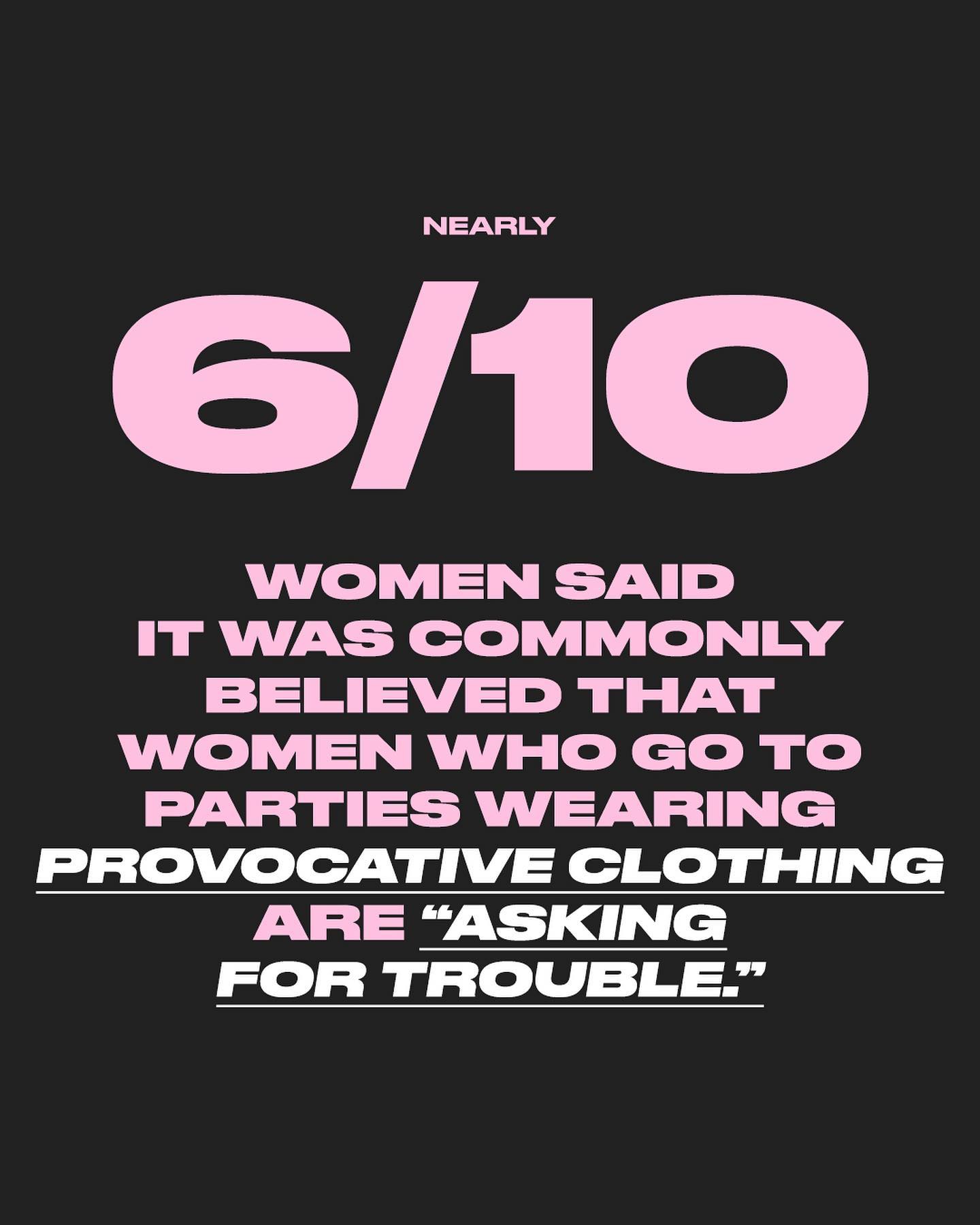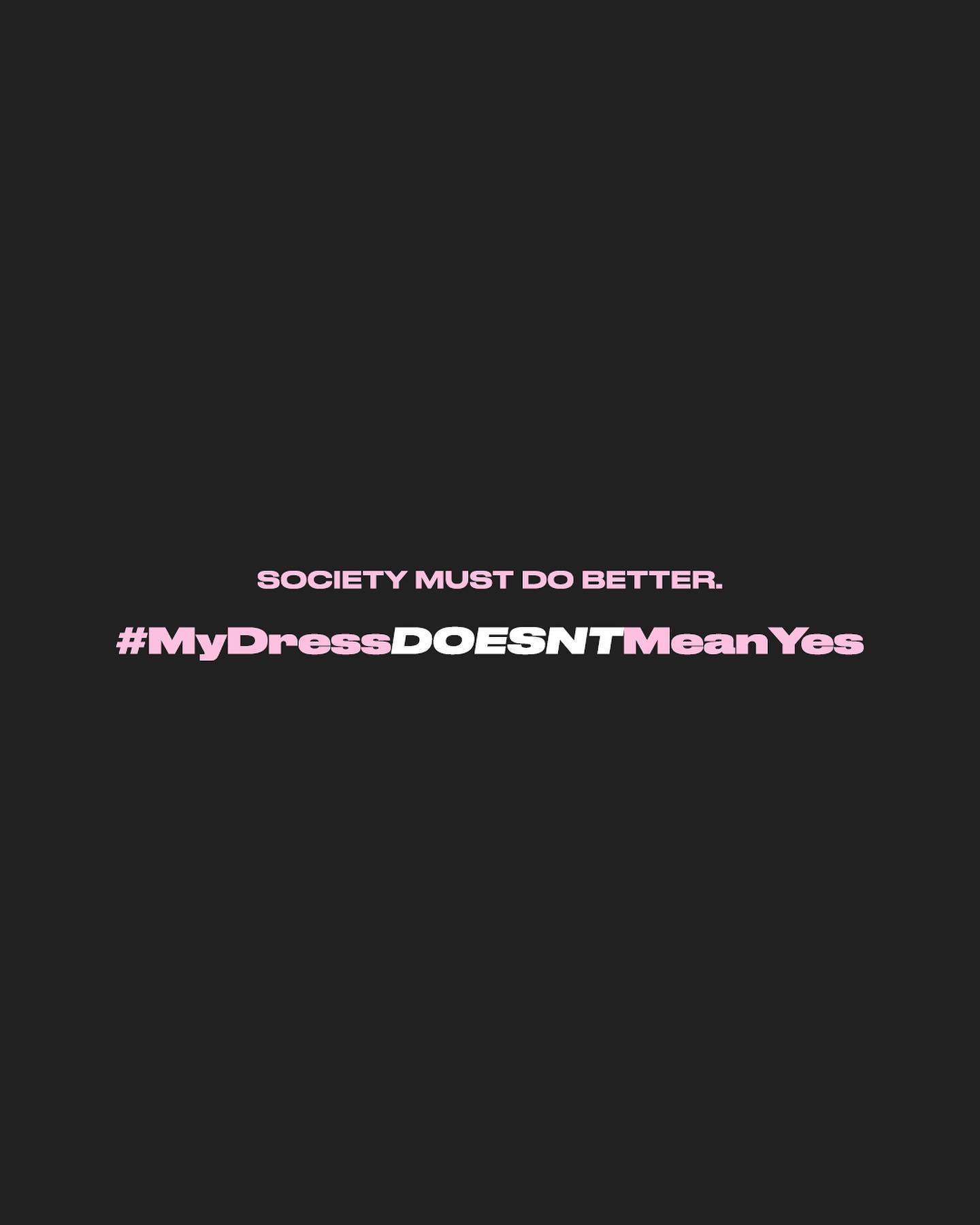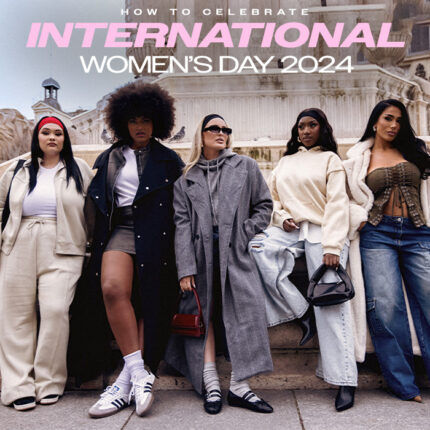
International Women’s Day 2022
This International Women’s Day (and every other day), we are committed to stamping out the stigma that what you’re wearing gives someone else the right to your body.
It has been revealed that 55% of men believe that ‘the more revealing the clothes a woman wears, the more likely it is that she will be harassed or assaulted’.
Over the last twenty years, other studies in the United States and elsewhere have found that psychiatrists, judges, jurors, and college students believe that a woman wearing a revealing outfit is more likely to be attacked or sexually harassed than a modestly dressed woman, and if attacked, that she is partially responsible for her assault, and her attacker is less culpable.
We will be launching an anti-rape campaign in partnership with women’s sexual violence charities, The Survivors Trust, It’s On Us, End Rape On Campus and En Avant Toutes, offering slogan tote bags to spread the message with full profits going to our partner charities.
Society must do better.
#MyDressDoesntMeanYes

How Can You Help?
We’ve put together a list of incredible charities that you can reach out to directly to offer help, or if you are in need of help. If someone you know is in danger, you can contact the police and reach out to the professionals at these charities:
AVA
End Violence Against Women
Rape Crisis England & Wales
Rape Crisis Scotland
RASASC
Rights Of Women
The Survivors Trust
Greater Manchester Rape Crisis
MIND
Support The Cause
As part of our campaign, we are selling tote bags to spread the message far and wide.
All profits will be donated to our partner charities The Survivors Trust, It’s On Us, End Rape On Campus and En Avant Toutes.
White My Dress Doesn’t Mean Yes Tote

Speak Out
It’s time we confront those we see or hear doing wrong. It’s time to take our stand. If you know someone is acting inappropriately, confront them, but only if it is safe to do so. By spreading awareness and confronting the issue, we will take back control. We are strong and we are resilient. We can do this.

Reclaim Your Right To Your Outfit
100% of profits from any dress within the International Women’s Day category will also be donated our partner charities.
International Women’s Day Dresses
Read more about the PLT International Women’s Day campaign onsite.
#MyDressDoesntMeanYes

Campaign Data Sources
#1. “55 per cent of men believed that “the more revealing the clothes a woman wears, the more likely it is that she will be harassed or assaulted”.
#2. According to one study, 54 percent of women at least partially blame rape victims for their assaults, due to victims dancing sexily, flirting, or wearing provocative attire.
#3. Twenty-four per cent of this age group said wearing a short skirt, accepting a drink or having a conversation with the rapist made victims partly responsible.
#4. One third of respondents in a 2005 Amnesty International survey of over 1,000 people in the United Kingdom believed that a woman who wore revealing clothing and behaved flirtatiously was partly responsible if she was raped.
#5. A study in Brazil found that 58.5% of those surveyed agreed with the statement, “[w]omen who wear tight-fitting clothes deserve it when they are attacked.”
#6. Over the last twenty years, other studies in the United States and elsewhere have found that psychiatrists, judges, jurors, and college students believe that a woman wearing a revealing outfit is more likely to be attacked or sexually harassed than a modestly dressed woman, and if attacked, that she is partially responsible for her assault, and her attacker is less culpable.
#7. McMahon and Farmer found that 53% of university students agreed that the actions of a woman led to her being raped.
#8. In interviews with 114 convicted rapists, researchers found that 13% of the rapists tried to justify their actions and denigrate their victims by invoking the stereotype that women instigate or precipitate rape by the way they dress.
#9. When women go to parties wearing revealing clothes, they are asking for trouble (women 48%, men 35%).
#10. Nearly 6 out of 10 women said it was commonly believed that women who go to parties wearing provocative clothing are “asking for trouble.”
#11. A Federal Commission on Crime of Violence study found that just 4.4 percent of all reported rapes involved “provocative behavior” on the part of the victim.
#12. Item 19 and 22 both reference the way the woman is dressed and resulted in high levels of victim blaming of the woman with 30% and 32% blaming the woman, respectively.
#13. 31.4% of participants voted to blame for: A woman who likes to dress sexily because it makes her feel good about herself is constantly sexually harassed by the men she works with.
#14. 29.8% of participants voted to blame for: A woman who is wearing revealing clothing is catcalled in the street by men who tell her to take her top off. (Page 91)
#15. To the questions of whether they assumed that women dressed in sexy clothing were trying to arouse them or elicit sexual advances from them, 30.6% and 20.2% respectively stated that those were uniformly the intentions, in their opinion. An additional 53.2% and 55.6% thought those were the intentions most of the time. (Male responses only) (Page 8)
#16. 40 percent of U.S. adults believe that someone who’s wearing revealing clothing is responsible for any unwelcome sexual contact or advances they may receive. (Fifteen percent say “fully responsible” and 25 percent say “somewhat responsible.”)
#17. A little over half of Americans (55 percent) believe that the “main reason” women wear revealing clothing is to “attract attention.” Specifically, 61 percent of men believe this.
#18. Dress codes teach women, from a young age, that their bodies are to be hidden. To show skin is to be “skimpy.” They teach that young girls’ bodies are provocative and sexy. By banning cleavage and thighs, dress codes teach girls that their bodies are objects and they are a distraction.
Dress codes perpetuate the vibes of “women must protect themselves” instead of teaching men to behave themselves.
#19. Of the remaining 37 items that accentuate the body, 57% are primarily marketed in stores to GIRLS, 38% to any gender, and only 5% are marketed primarily to BOYS. Rules that prohibit specific items due to their perceived sexiness (e.g., “short shorts”, “sheer clothing” etc.) impact students wearing clothing marketed to girls more than their peers. Though, not all clothes that accentuate the body do seem to be banned based on their perceived sexiness.
#20. In a study of clothes available for girls (sizes 8-14) in online stores, 41% of girls clothing in “tween” stores like Abercrombie Kids, were considered sexualized. These clothes wouldn’t meet the requirements of most dress codes we analyzed, meaning that it can be challenging for students shopping in the “girls” section to find “school appropriate” clothes.
Additional source.
#21. Policies around dress codes in the US using phrases like “distract” or “disrupt” are in the vast majority, representing 76% of the schools in our dataset.







